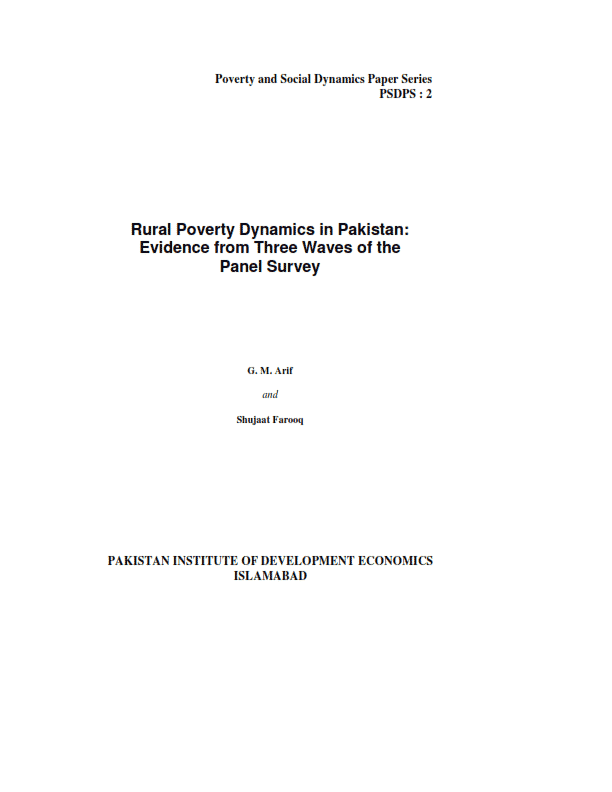
Pakistan Institute of Development Economics
- Home
Our Portals
MenuMenuMenuMenuMenuMenuMenu - ResearchMenuMenuMenuMenuMenuMenuMenu
- Discourse
- The PDR
- Our Researchers
- Academics
- Degree Verification
- Thesis Portal
- Our Portals
Rural Poverty Dynamics in Pakistan: Evidence from Three Waves of the Panel Survey
Poverty analysis in developing countries, including Pakistan, has generally focused on poverty trends based on cross-sectional datasets, with very little attention being paid to its dynamics—that is, transitory or chronic poverty. The transitory poor are those who move out of or fall into poverty between two or more periods, while the chronic poor remain in the poverty trap for a significant period of their lives. Static measures of households’ standard of living do not necessarily provide a good insight into their likely stability over time. For instance, a high level of mobility into or out of poverty might suggest that a higher proportion of a population experiences poverty over time than the cross-sectional data might show. It also implies that a much smaller proportion experiences chronic poverty relative to those enumerated on cross-sectional observations in a particular year [Hossain and Bayes (2010)]. Thus, the analysis of poverty dynamics is important if we are to uncover the true nature of a population’s wellbeing. Both micro- and macro-level socio-demographic and economic factors are likely to affect poverty movements and intergenerational poverty transmission [Krishna (2011)].



